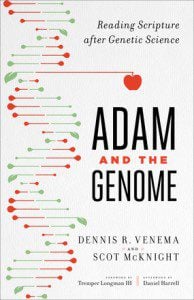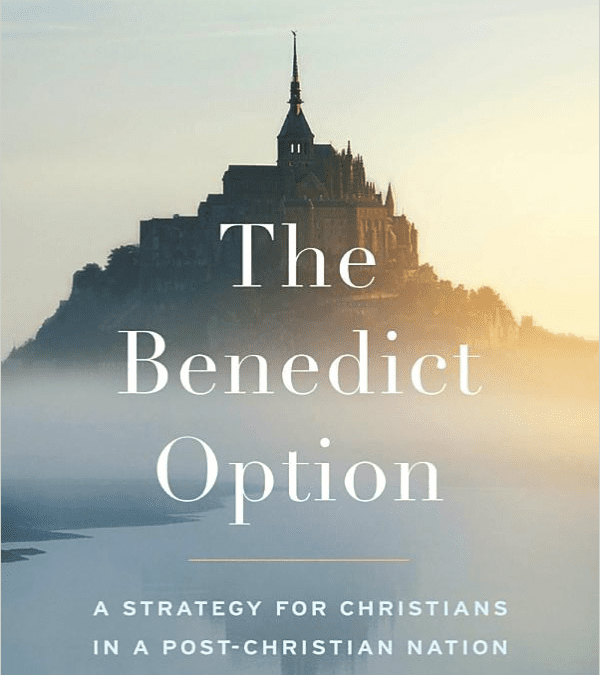By Bob Robinson
There is an irony that might be missed by those who have embraced the APEST typology advocated by Alan Hirsch, Mike Breen, and others in the Missional Movement.
In our desire to overcome an overbearing leadership structure that was found in putting so much power in the Shepherd-Teacher, we are in danger of creating yet another overbearing leadership structure but with different leaders. We worry so much about the destructive nature of institutionalism that we shift the focus from 2/5 of the APEST typology to the other 3/5.
In other words, with the emphasis on APEST, we are still not focused on what God ultimately desires! We are still talking about leadership structures rather than on what the church is meant to produce: Equipped saints! The goal is supposed to be giving God’s people in Christ the tools needed for what they are called to do: their work of ministry, and the building up of the body of Christ. The ultimate telos of all this is that we will all reach unity in our belief and loyalty by truly knowing God’s son, becoming mature as human beings, fully becoming like Christ (see Ephesians 4:11-13).
The Two Spheres Church Leaders Need to Tend
While there must be structures for church leadership so that believers can be made fit for their purpose in life, to say that therefore the goal is to help each believer fulfil their place in the APEST typology is a major misstep. The misstep is not in the desire to create a healthy leadership structure, it is in presuming that Ephesians 4:11-12 is about developing every Christian to become some sort of leader in the church, either an apostle, a prophet, an evangelist, a shepherd, or a teacher. It remains solely focused on developing church leadership for the sake of the local church rather than focusing on developing normal, everyday Christians in their ministry vocations.
Those in full-time church ministry too easily forget that there are two spheres that church leadership must constantly tend to: The development and implementation of church leadership and the development and implementation of regular, ordinary Christians in their works of ministry, utilizing their gifts for the common good.
The APEST typology may be in danger of not doing enough to shift the focus toward the Priesthood of All Believers and away from the authority figures in the church. The goal should be the equipping and empowering of Christians to be Salt and Light in every nook and cranny of the world in which they find themselves.
However, in an ironic twist, the effort to overcome one overbearing leadership structure may lead to another overbearing leadership structure. Why? Because APEST is still almost exclusively about the important sphere of developing church leaders. It is still about how the people in the local church can become leaders in that church, rather than about the main goal: the equipping of the saints for their works of ministry.
The Whole Counsel of Scripture
The problem stems from placing far too much emphasis on this one section of this one Epistle (Alan Hirsch actually calls Ephesians 4:11 the “Constitution” for the Church) without allowing the rest of Scripture inform us as well. I already criticized APEST for falsely separating the Pastor-Teacher role that should not separated and for ignoring the fact that the Pastoral Letters do not go into the need to develop all Christians into the typology of APEST but rather focusing on the offices of “Elders” and “Overseers” who are able to teach people so that they can mature.
Other important Scriptures that are not dealt with nearly enough in the APEST typology are those that Paul uses to explain the gifts that God gives his people in Romans 12:6-8, 1 Corinthians 7:7, 1 Corinthians 12:8-10, and 1 Corinthians 12:28. When we look at the gifts listed in all these passages, we find that Paul does not attempt to be exhaustive in any one of them.
In the lists that Paul provides in his letters, there are overlaps of the same gifts, and some gifts might actually be synonyms of gifts in another list. Sometimes there seems to be an order to the gifts (like in 1 Corinthians 12:28, where Paul puts apostles first and prophets second, but then, in a break from our Ephesians 4 passage, skips ahead to teachers). Mostly, it seems that Paul is just listing off random samples of gifts to his amanuensis, without any desire for us to place too much emphasis on order or what’s missing or included.
Some scholars believe that the reason Paul doesn’t provide long, meticulous lists is that these gifts have so many different expressions in different Christians that to do so would be to make it appear that Paul is limiting the number and kinds of gifts the Spirit will bestow on any one Christian. No one Christian’s mix of gifts will be exactly like another Christian’s mix.
Here are the lists:
Romans 12:6–8
- prophecy
- serving
- teaching
- encouraging
- contributing
- leadership
- mercy
1 Corinthians 7:7
- marriage
- celibacy
1 Corinthians 12:8–10
- word of wisdom
- word of knowledge
- faith
- gifts of healing
- miracles
- prophecy
- distinguishing between spirits
- tongues
- interpretation of tongues
1 Corinthians 12:28
- apostle
- prophet
- teacher
- miracles
- kinds of healings
- helps
- administration
- tongues
Ephesians 4:11
- apostle
- prophet
- evangelist
- pastor-teacher
So, a question raised to those advocating APEST is, Why are we focused on just this one list of spiritual gifts? What about all the other gifts that God’s Spirit freely gives to his people?
Do You See the Worrisome Irony?
The APEST typology has a danger of putting too much emphasis on one list of gifts given to the church, a list that they see as the keys to church leadership structure. They are providing new “Spiritual Gifts Tests” (remember those?) but just focusing on the five gifts listed in Ephesians 4 rather than all of the gifts listed in the New Testament (let alone all the even greater number of gifts found in the Old Testament!) – gifts that are meant to create in God’s people a deep reliance on God’s Spirit to provide the ability to do their work of ministry.
In the desire to spread the ministry of the church away from the exclusive grip of the Pastor-Teachers by emphasizing the Apostles, Prophets, and Evangelists of Ephesians 4:11, we ironically are simply moving from one set of leaders to another set.
It moves away from the plethora of gifts given to all of God’s people so that they can do the work of ministry. It mistakenly states that all believers must somehow fit into the APEST typology rather than on relying of God’s Spirit to provide, in a vast and various ways, the power to do their ministry!






 Chapter three of
Chapter three of  Perhaps there is a purpose to the method of evolutionary creation. Descent from two individuals is not “good.” Genetic diversity is an asset – as the Tasmanian Devil illustrates. There is more in this chapter of Adam and the Genome, but this is enough for today.
Perhaps there is a purpose to the method of evolutionary creation. Descent from two individuals is not “good.” Genetic diversity is an asset – as the Tasmanian Devil illustrates. There is more in this chapter of Adam and the Genome, but this is enough for today.

 Personal Experience. Motivated belief for a personal God is not found in such impersonal considerations as the fine-tuning of the universe or the beauty of the equations of physics. Belief in a personal God is motivated “by reference to particular events and persons.” There is a specificity of divine action and communication that makes personal language such as father, king, or lord appropriate. This brings us unavoidably to scripture – not as a divine dictation to be believed – but as a record of God’s relationship with his people.
Personal Experience. Motivated belief for a personal God is not found in such impersonal considerations as the fine-tuning of the universe or the beauty of the equations of physics. Belief in a personal God is motivated “by reference to particular events and persons.” There is a specificity of divine action and communication that makes personal language such as father, king, or lord appropriate. This brings us unavoidably to scripture – not as a divine dictation to be believed – but as a record of God’s relationship with his people.






